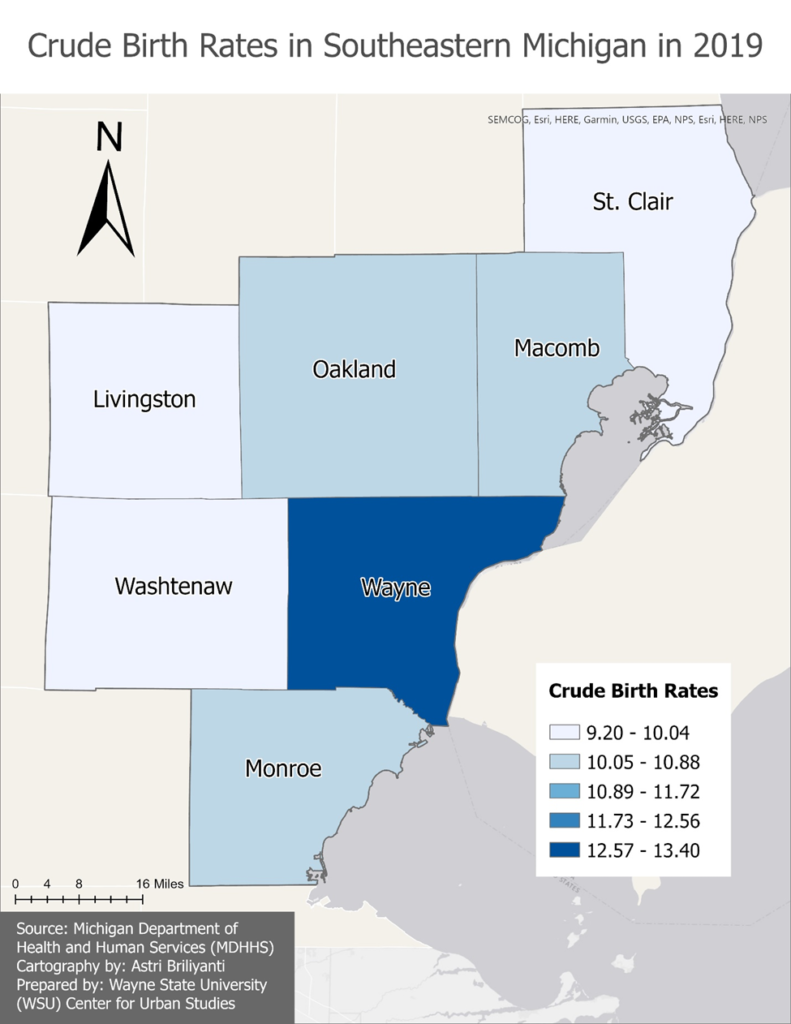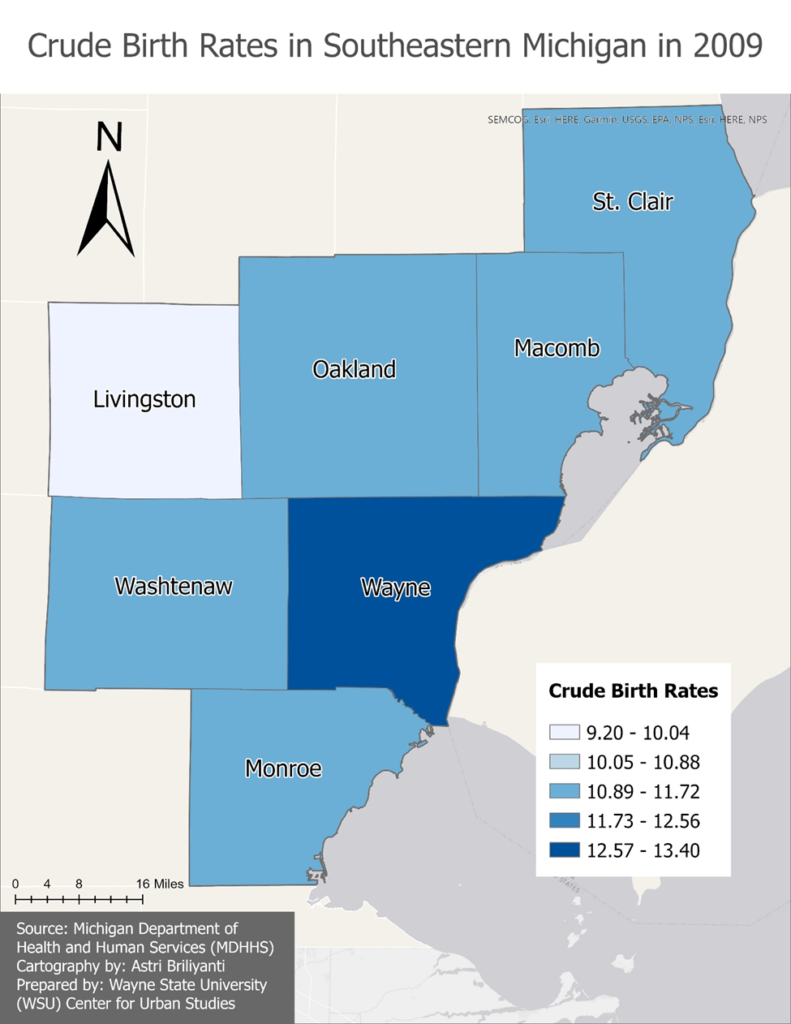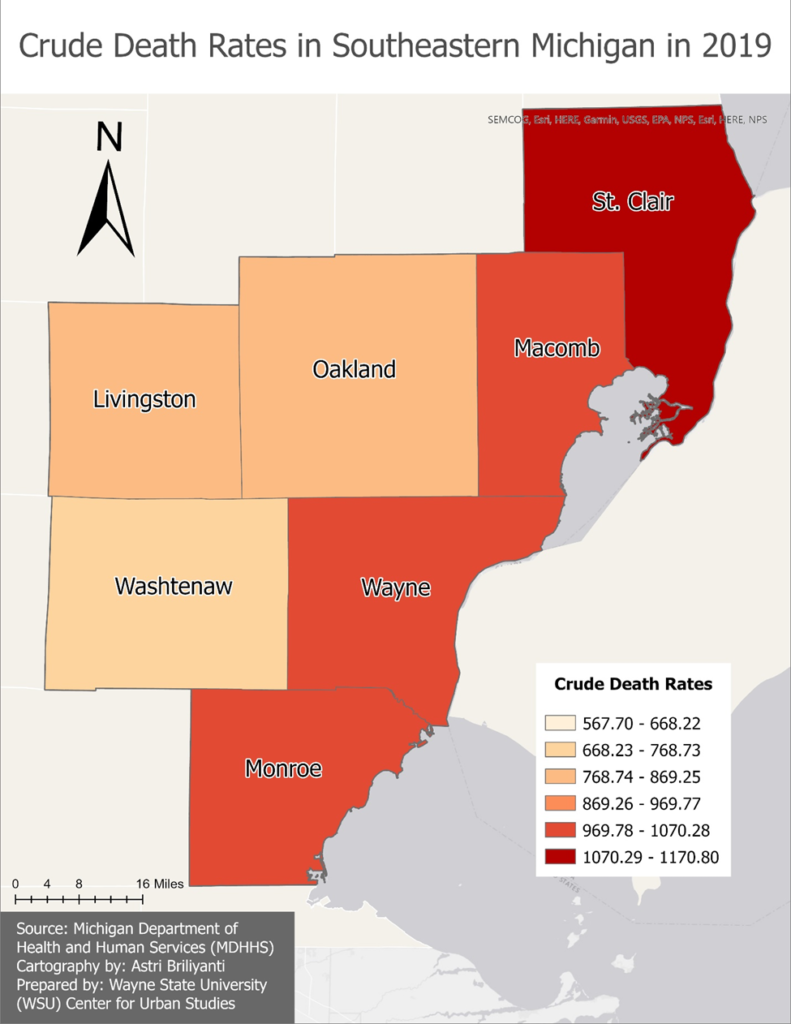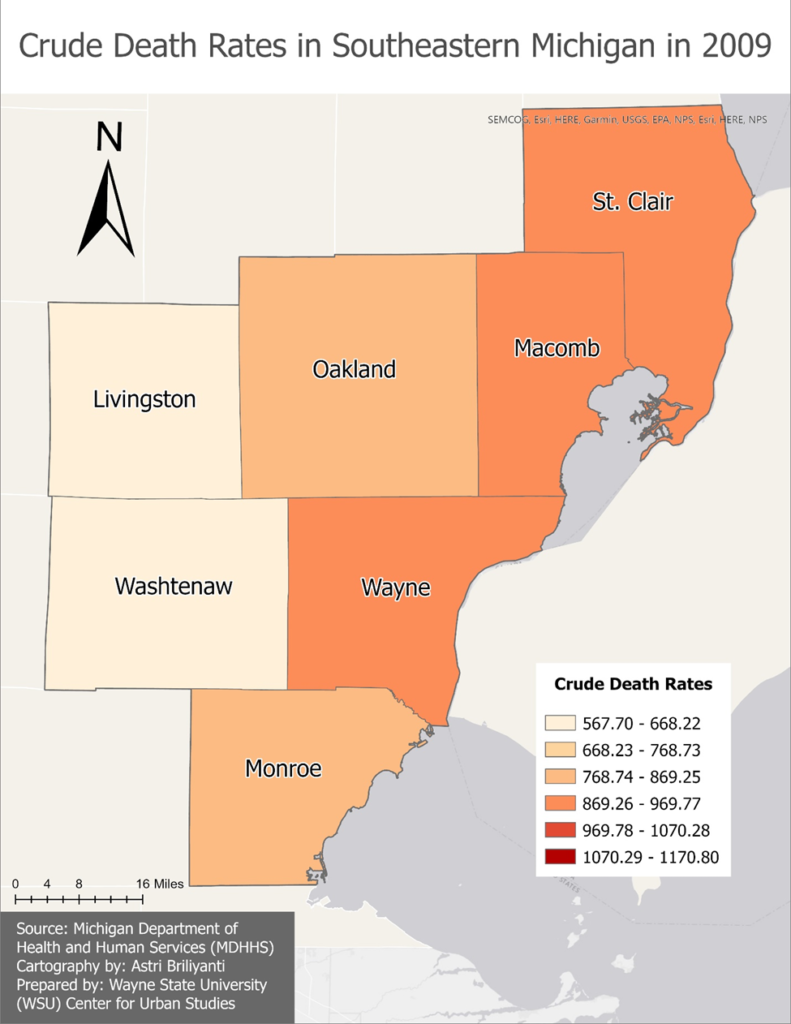More people died in Michigan in 2020 than were born, and it has been trending this way for quite some time. The Michigan Department of Health and Human Services reported that in 2020 there 104,166 people born and 117,087 who died; the 2020 data was only available at the state level. While COVID certainly impacted the number of 2020 deaths (11,362 were COVID related), there still would have been a greater number of deaths than births without the pandemic.
While 2020 data is not yet available at the county level, the 2019 data shows how birth and death rates have long been trending toward more deaths than births. In Wayne County, the largest county in the state, a birth rate of 12.9 births per 1,000 residents was reported, which was equivalent to 22,553 births. Wayne County had the highest birth rate in the region in 2019, but it did not have the largest change in birth rates between 2009 and 2019. According to the data, there was a birth rate of 12.9 births per 1,000 residents in Wayne County in 2019 and a birth rate of 13.6 births per 1,000 residents in 2009. Washtenaw County had the largest difference in birth rates between 2009 and 2019 at a rate decrease of 1.4 per 1,000 residents. In 2019 Washtenaw County had a birth rate of 9.7, which was equivalent to 3,560 births, and in 2009 that birth rate was 11.1. Oakland, Macomb, Monroe and St. Clair counties all also reported birth rates above 10 in 2009 (11.1, 11.1, 11.4 and 10.9, respectively); Livingston County was the only one in the region to report a birth rate below 10 in 2009. By 2019 only Macomb, Monroe, Oakland and Wayne counties reported birth rates above 10 (10.4, 10.1, 10.3 and 12.9, respectively).
Michigan’s birth rate per 1,000 residents was 11.8 in 2009 and 10.8 in 2019.


As birth rates in Michigan were declining, death rates were on the rise. In 2019, St. Clair County had the highest death rate at 1,170.8 per 1,000 residents in 2019, which was equivalent to 1,863 deaths. Macomb, Monroe and Wayne counties were the only other counties with death rates above 1,000 ( 1,026.2, 1,047.8 and 1,044.7, respectively). In 2009 though there was not one county in the region with a death rate above 1,000. St. Clair County reported 961.5 deaths per 1,000 residents, which was the highest death rate in the region reported. Overall, Monroe County experienced the highest increase in its death rate between 2009 (847 per 1,000 residents) and 2019 (1,047.8 per 1,000 residents) at a 221.8 rate increase per 1,000 residents.
It should also be noted that Michigan’s death rate per 1,000 residents was 871.7 in 2009 and 992.3 in 2019.


A decline in births will certainly impact Michigan long-term if things don’t turn around. While
Michigan did experience a small uptick in its population between 2010 and 2020 probably because of immigration, the rate of increase wasn’t as high as compared to other states, hence why Michigan lost a Congressional seat. Population decline, and even stagnation, could cause negative economic impacts and further loss of political power. On the other hand, it would give the environment a break from human interventions, giving forests and wildlife a chance to expand, perhaps.





























